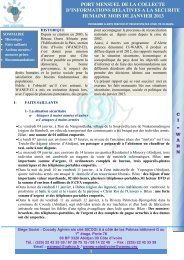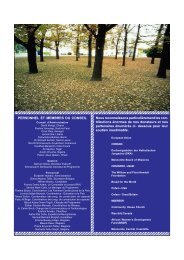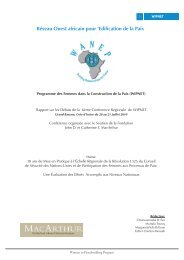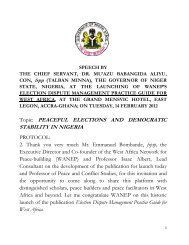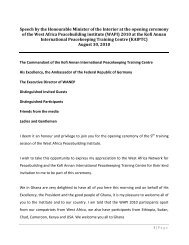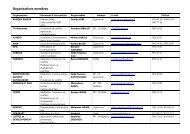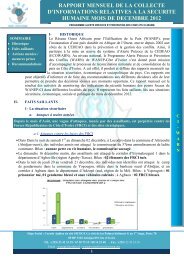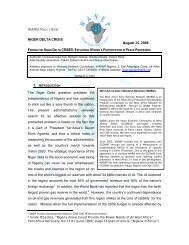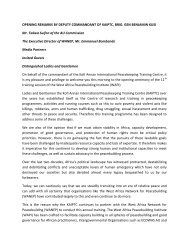DEVELOPMENT AND IMPLEMENTATION of National Action Plans ...
DEVELOPMENT AND IMPLEMENTATION of National Action Plans ...
DEVELOPMENT AND IMPLEMENTATION of National Action Plans ...
Create successful ePaper yourself
Turn your PDF publications into a flip-book with our unique Google optimized e-Paper software.
NAPs as Tools for Implementing UNSCR 1325 and Related Resolutions••A NAP is a document that details the actions/initiatives that a government will undertakewithin a given timeframe to meet the obligations in UNSCR 1325.••The UNSC recognized that the national implementation <strong>of</strong> UNSCR 1325 and relatedresolutions is an important tool for furthering the women, peace and security agenda.This was why the presidential statements <strong>of</strong> 2004/40 and 2005/52, called to memberstates to implement UNSCR 1325 including the development <strong>of</strong> NAPs or othernational level strategies such as peace policies, gender policies or medium/long termdevelopment plans and has consistently recommended that member states acceleratethe development <strong>of</strong> both national and regional action plans for the implementation <strong>of</strong>UNSCR 1325.••A NAP reflects the government’s commitment as well as accountability in ensuring thesecurity <strong>of</strong> women and girls during armed conflicts and in enhancing their active anddirect participation in conflict prevention and peacebuilding as well as post-conflictefforts. It is a practical and operational tool for those affected by armed conflicts –women, children and communities to be informed about the governments’ response totheir plights as well as the assistance programmes available to them.••For frontline enforcement agencies and other peace-keeping forces, the NAP affirms theirsignificant role in protecting the physical safety and security <strong>of</strong> women and girls fromsexual and gender-based violence and in identifying their specific needs in the times <strong>of</strong>crises as NAPs enjoin peace-keeping forces to strictly observe the highest standards <strong>of</strong>conduct and behaviour <strong>of</strong> the armed forces vis-a-vis women, girls and other vulnerablesectors in the communities during such emergencies.••NAPs will also serve as a useful guide in defining the important and distinct roles <strong>of</strong>implementers <strong>of</strong> UNSCR 1325 both at the policy level and enforcement levels.••NAPs will ensure that government programmes respond to the immediate and longtermneeds <strong>of</strong> women and children before, during and after conflict incidents.••NAPs could fall under international or domestic policy; where it falls will depend on whichministries are leading and involved in the NAP process. Countries with peacekeepingforces are more likely to set international objectives with limited domestic focus to thediplomatic core and armed forces. Countries that have experienced conflict within theirborders are more likely to focus on domestic concerns.Benefits <strong>of</strong> Developing a NAP••Increased visibility and accountability <strong>of</strong> national efforts to implement UNSCR 1325.••NAPs will help tie together the different policies and operational areas within agovernment’s diverse institutions and programmes.••Coherence and Coordination between government agencies – UNSCR 1325 is a broadresolution that requires member states action in a number <strong>of</strong> different areas. A NAP istherefore a good mechanism for a government to reflect on what is already being doneand to elaborate on further commitments and plans. It allows government departmentsto have a clear division <strong>of</strong> labour and can help to identify potential civil society partnersfor implementing the resolution.8



![English [266KB] - West Africa Network for Peacebuilding](https://img.yumpu.com/50460007/1/184x260/english-266kb-west-africa-network-for-peacebuilding.jpg?quality=85)
